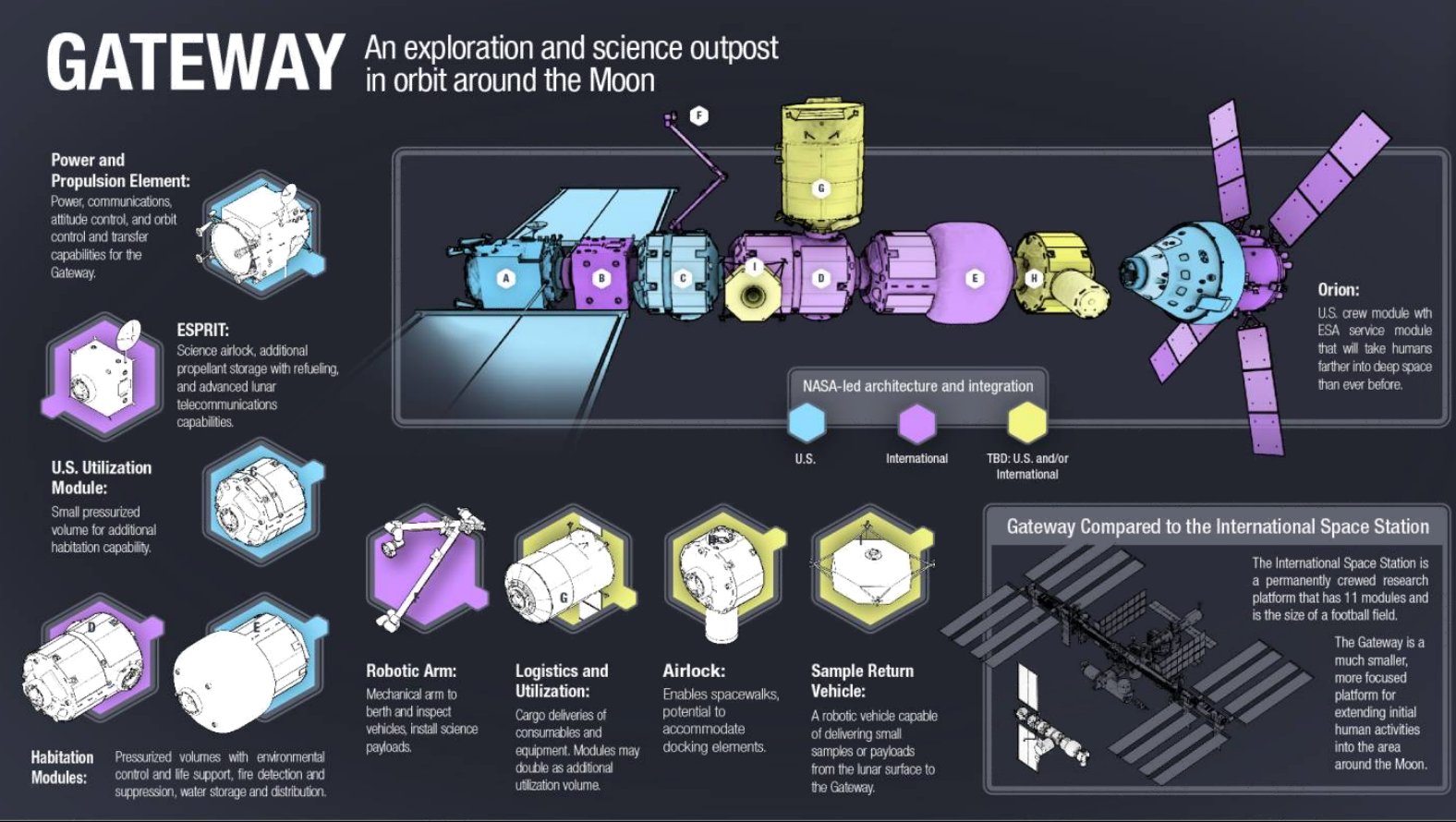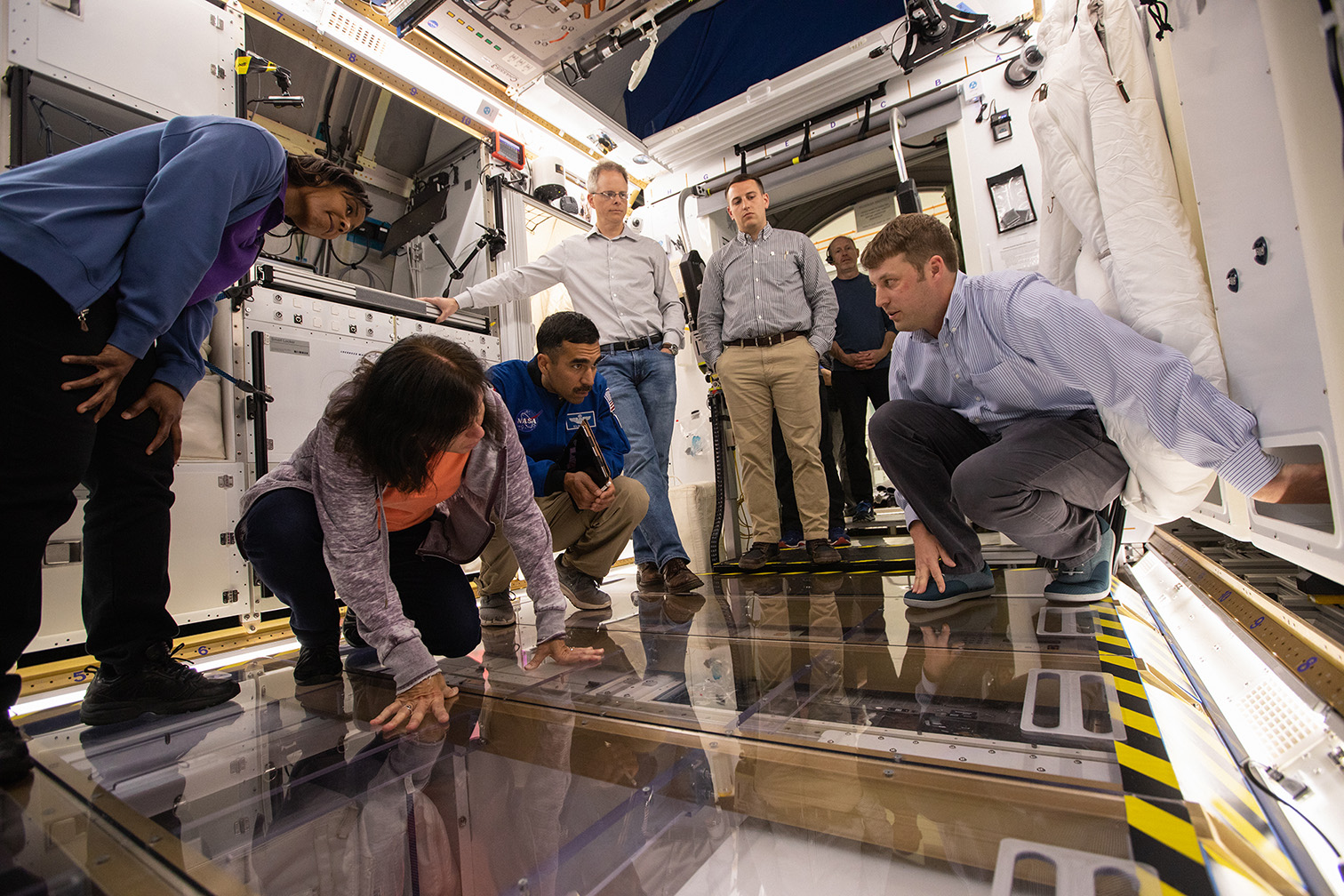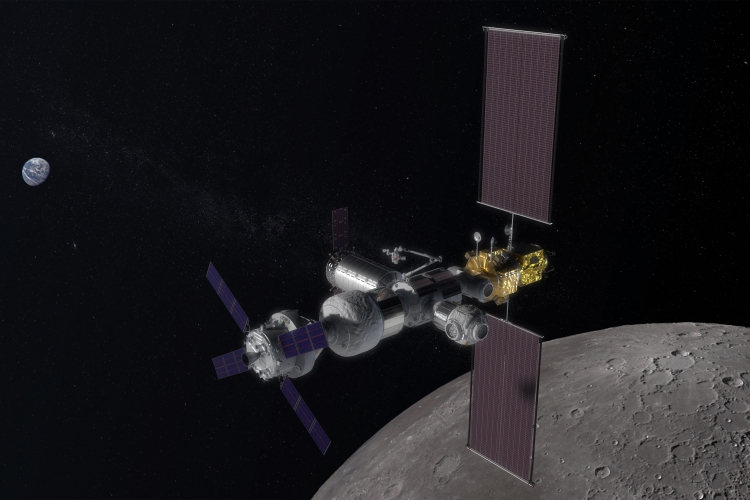Humans are returning to the moon, this time to stay. Plans are currently underway for a moon-orbiting facility that will provide a sustained presence on and around the Moon, while also serving as a testing ground for deep space missions. The NASA project, known as the Gateway, will serve as a habitat for astronauts assigned to lunar missions and beyond, while also enabling commercial and scientific activities in the fields of astrophysics, planetary science, helio-physics, fundamental space biology, and human health.
While similar to the International Space Station (ISS) orbiting Earth today, Gateway’s smaller size is offset by enhanced functionality. While the ISS offers 13,696 cubic feet of habitable area and typically houses six crew members serving five to six-month missions, the Gateway’s spartan 1,942 cubic feet will support a maximum of four crew members at a time, who will live and work at the station for 30 to 90-day stints. The Gateway will circle the Moon in a highly elliptical six-day orbit that will bring it within 930 to 43,500 miles from the lunar surface, allowing it to serve as a way station for landers headed for the lunar surface and for vehicles venturing into deep space. In addition to easier access to the lunar surface, Gateway occupants will also be able to remotely command moon-based rovers without the latency inherent in Earth-based commands.

NASA plans to shuttle astronauts on the five-day, 250,000-mile commute to the Gateway using the agency's Space Launch System (SLS) megarocket and Orion deep-space capsule. While both Orion and SLS are still in development, the first portion of Gateway and its power and propulsion element (PPE) are scheduled for launch in 2022. NASA is also planning to equip Gateway with a robotic arm, crew habitat module and airlock shortly thereafter. Barring any delays, the Gateway may accommodate astronauts as early as the mid-2020s and will ultimately allow for a more cost-effective and efficient staging area for a manned Mars mission without Earth’s prohibitively powerful gravity.
Five contractors have been tasked with developing ground module concepts for the habitat portion of the Gateway project, and The Aerospace Corporation is currently participating in the ground testing for all of them.
“Aerospace is evaluating and putting together data packages for all of the habitat concepts, so that we can select the elements for each mock-up that we like the best,” says JSC Programs’ Engineering Specialist Jason Poffenberger. “Ultimately, we’ll use that information to inform requirements for the actual build of the cis-lunar habitation module.”

Given the habitat module’s integration with the Gateway, habitat design requirements will also inform design specifications for the Gateway, and its airlock and crew lock mechanisms in particular. Aerospace is expected to remain involved in the project indefinitely.
“We expect to apply our experience with the habitat modules to the flight units themselves,” Poffenberger added. “We’re involved in the ground testing process from end-to-end. This includes everything from mission planning to timeline monitoring and execution of the tests themselves. We like to think that there’s a possibility for Aerospace employees and NASA ground testing to support the flight operations as well.”
Much like the ISS, Gateway will host and support research year-round. As part of its strategic vision for sustainable space exploration, NASA hopes to leverage sustained investments in technologies and capabilities to address the challenges of future missions, while also fostering industry and international partnerships to develop and operate the Gateway. As always, Aerospace remains integral to the process, lending its expertise to create the resilient, evolvable, multi-use architectures required for this new, cooperative era of space exploration.

